Comments / Questions (521)
![]() Lise Teien wrote:
Lise Teien wrote:
Utrolig forvirrende oppskrift når man kommer til bærestykket. Er jo et langt foredrag i masker og raglan og stolper. det må kunne gjøres enklere
22.08.2019 - 15:11
![]() Therese Fredriksson wrote:
Therese Fredriksson wrote:
Hej! Jag blir lite förvirrad av mönstret. Hut ska jag lyckas minska på framstycket och ändå behålla mönstret? Sen undrar jag hur många maskor jag ska ha kvar på stickan efter jag har gjort de 16!minskningarna. Vänliga hälsningar
11.08.2019 - 01:20DROPS Design answered:
Hej Therese, efterhand som du minskar mot raglan, försvinner de yttersta maskorna bara. Det vill säga att alla andra maskor stickas i mönster ända ut mot raglanen. Lycka till :)
03.10.2019 - 14:04
![]() Heg wrote:
Heg wrote:
Står litt fast. Kommet til hvor jeg skal sette maskene til halsen. Forstår ikke helt hvilke masker det er snakk om og hvordan jeg skal felle da pga. den skrå åpningen. Håper dere kan hjelpe med å skrive litt nøyere slik at jeg får til slutten
22.07.2019 - 19:14DROPS Design answered:
Hei Heg. Du har allerede satt et merke som viser midten av forstykket (samtidig som det ble satt merker i alle overgangene mellom ermene og bolen) og når du skal sette maskene på en tråd setter du de midterste maskene ved dette merke på en tråd (f.eks i den minste str er det 26 masker før merket og 26 masker etter merket). Avhengig av hvilken str du strikker, vil du nå ha veldig få masker på den ene pinnen og mange masker på den andre pinnen. Nå skal hver del strikkes ferdig hver for seg og det felles på begynnelsen av hver pinne fra halsen. God Fornøyelse!
02.09.2019 - 10:57
![]() Elisa wrote:
Elisa wrote:
Ich stricke diese Anleitung in Größe 6/9 Monate und fertige nun die Rundpasse. Den Schlitz für die Knopfleiste habe ich relativ weit rechts gesetzt und laufe nun Gefahr aufgrund der Abnahmen an der Markierungen zu den Übergängen, die Maschen für die Knopfleiste abzunehmen. Gibt es einen Tipp wie mittig ich die diese ansetzen muss, damit das nicht passiert?
07.07.2019 - 21:12DROPS Design answered:
Liebe Elisa, am Anfang und am Ende der Reihen (Rundpasse) muss man auch für den Raglanabenhmen (siehe TIPP ZUM ABNEHMEN), dh innerhalb 1 Randmasche wird es am Vorderteil sowie bei den letzten Ärmel auch für den Raglan abgenommen. Viel Spaß beim stricken!
08.07.2019 - 10:34
![]() Jinky wrote:
Jinky wrote:
Thank you so much. I don\'t know if I should bind off the shoulder at the back and put the mid back as well on a stitch holder, or is there no more bind-off on the back?
12.06.2019 - 16:01DROPS Design answered:
Dear Jinky, whenn all decreases for raglan and neck are done, slip all remaining sts of yoke on a stitch holder, then work the raglan edges along opening on sleeve then along opening on front piece. Then pick up sts along button bands and neck edge to work collar. Happy knitting!
13.06.2019 - 08:40
![]() Jinky wrote:
Jinky wrote:
Thanks for the reply, sorry but I'm still confuse, after I placed the mid front to a stitch holder, I now have 5 stitches on my right needle and the rest on my left, is this correct? If I will work the 5 stitches first raglan dec and bind off of 2 and next row 1 right, and proceed to bind off the remaining stitches and do the rest? Thank you for your help.
12.06.2019 - 05:23DROPS Design answered:
Dear Jinky, that's right, you will now finish the two parts (neckline on front piece on one side and rest of work on the other side) separately, continue to bind off towards neck and continue raglan decreases as before on both pieces. Happy knitting!
12.06.2019 - 07:36
![]() Jinky wrote:
Jinky wrote:
Hi , am now on the part - *`Bind off to shape the neckline at the beg of every row from mid front: 2 sts 1 time and 1 st 1 time`*. I have separated the mid-front stitches of 14 and placed it in a stitch holder, so now I have the first few stitches on the raglan side and the rest after the second 7stitches from mid marker. Can you tell me which part of should I bind off? Thank you.
11.06.2019 - 16:48DROPS Design answered:
Dear Jinky, you now will work both pieces separately, casting off towards the neck from RS as explained (= 2 sts 1 time + 1 st 1 time) and decreasing for raglan as before. Happy knitting!
11.06.2019 - 17:06
![]() Jinky wrote:
Jinky wrote:
Oh never mind, I misread the casting/binding off... sorry
10.06.2019 - 18:51
![]() Jinky wrote:
Jinky wrote:
Hi!, need help on this line " Beg by casting/binding off 3 sts on each side of this raglan opening.", So need to cast on 3 and when I knit at the end, I will bind off 3 stitches, is that right? Thank you.
10.06.2019 - 18:10DROPS Design answered:
Dear Jinky, on very first row on yoke, cast off the first 3 sts at the beginning of row, work row to the end, turn and cast off the first 3 sts at the beginning of the next row, work row to the end = you have now cast off 3 sts on each side. Happy knitting!
11.06.2019 - 11:56
![]() Barbara wrote:
Barbara wrote:
Por favor, no se olviden de mi pregunta! Alguien me puede ayudar?
09.05.2019 - 16:45DROPS Design answered:
Hola Barbara. La respuesta a tu pregunta estaba publicada a fecha de 7 de mayo.
13.05.2019 - 00:11
McDreamy#mcdreamysweater |
|||||||
|
|
|||||||
Knitted jumper with textured pattern and raglan sleeve for baby and children in DROPS BabyMerino
DROPS Baby 21-15 |
|||||||
|
JUMPER: PATTERN: See diagrams M.1 to M.3. Diagrams show the pattern from RS. DECREASING TIP (applies to raglan): FROM RS: At beg of row: 1 edge st, slip 1 st as if to K, K1, psso. At the end of row, beg when 3 sts remain: K2 tog, 1 edge st. By the other 3 markers dec as follows in each transition between sleeve and body piece, beg 3 sts before marker: K2 tog, K2 (marker sits between these 2 sts), slip 1 st as if to K, K1, psso. FROM WS: At beg of row: 1 edge st, P2 tog. At the end of row, beg when 3 sts remain: P2 tog into back of loop, 1 edge st. By the other 3 markers dec as follows in each transition between sleeve and body piece, beg 3 sts before marker: P2 tog into back of loop, P2 (marker sits between these 2 sts), P2 tog. GARTER ST (back and forth on needle): K all rows. -------------------------------------------------------- -------------------------------------------------------- BODY PIECE: Worked in the round on circular needle. Cast on 148-168-184 (204-216) sts on circular needle size 2.5 mm with Baby Merino. K 1 round and continue in rib, K2/P2. When rib measures 4 cm K 1 round, AT THE SAME TIME dec 28-32-32 (36-40) sts evenly = 120-136-152 (168-176) sts. Insert 1 marker at beg of round and 1 marker after 60-68-76 (84-88) sts (= the sides). Change to circular needle size 3 mm and continue in stocking st. REMEMBER THE KNITTING TENSION! When piece measures 14-15-18 (20-23) cm work diagram M.1 on all sts. After M.1 continue in diagram M.2 on all sts. AT THE SAME TIME when piece measures 17-18-21 (24-27) cm work next round as follows: cast off 4 sts for armhole, work 52-60-68 (76-80) sts (= front piece), cast off 8 sts for armhole, work 52-60-68 (76-80) sts (= back piece) and cast off the last 4 sts for armhole. Cut the thread and put piece aside. Knit the sleeves. SLEEVE: Worked in the round on double pointed needles. Cast on 44-48-52 (56-60) sts on double pointed needles size 2.5 mm with Baby Merino. K 1 round and continue in rib, K2/P2. When rib measures 4 cm K 1 round, AT THE SAME TIME dec 10-12-14 (16-16) sts evenly = 34-36-38 (40-44) sts. Insert a marker at beg of round = mid under sleeve. Change to double pointed needles size 3 mm and continue in stocking st. When piece measures 6 cm inc 1 st on each side of marker. SIZE 1/3 months + 6/9 months: Repeat the inc on every 4th round a total of 7-8 times. SIZE 12/18 months + 2 years: Repeat the inc on every 4th and 5th round alternately a total of 9 (12) times. SIZE 3/4 years: Repeat the inc on every 6th round a total of (12) times. = 48-52-56 (64-68) sts. AT THE SAME TIME when piece measures 13-14-17 (20-24) cm work M.1. After M.1 continue in M.2. When piece measures approx 16-17-20 (24-28) cm – make sure to be on the same row in M.2 as on body piece – cast off 8 sts mid under sleeve (= 4 sts each side of marker) = 40-44-48 (56-60) sts left on needle. Put piece aside and knit the other sleeve. YOKE: Slip sleeves on the same circular needle as body piece where cast off for armhole = 184-208-232 (264-280) sts. Insert a marker in all transitions between sleeves and body piece and insert a marker mid front (= 26-30-34 (38-40) sts each side). READ ALL OF THE FOLLOWING SECTION BEFORE CONTINUING! Continue back and forth on needle from the raglan on right front piece (when garment lies flat in front of you). Beg by casting off 3 sts on each side of this raglan opening. Continue in M.2 with 1 edge st each side (make sure pattern continues from body piece and sleeves). After 6-6.5-7 (8-8.5) cm of M.2 work M.3 and then complete piece in M.2. AT THE SAME TIME on first row from RS dec 1 st for raglan on each side of all markers – SEE DECREASING TIP! Repeat the dec on every other row a total of 13-15-16 (15-16) times and then on every row: 0-0-1 (6-7) times. AT THE SAME TIME when piece measures 24-26-30 (34-38) cm slip the middle 14-18-22 (22-22) sts on front piece (i.e. 7-9-11 (11-11) sts on each side of marker mid front) on a stitch holder for neck and complete each side separately. Cast off to shape the neckline at the beg of every row from mid front: 2 sts 1 time and 1 st 1 time. After all dec for raglan and neck are complete there are approx 54-58-62 (62-62) sts left on needle and piece measures approx 28-30-34 (38-42) cm up to shoulder. Slip sts on a stitch holder and work the raglan edges before the neckline. RAGLAN EDGE: Pick up approx 24 to 36 sts (divisible by 4) inside 1 edge st along the raglan opening on sleeve on needle size 2.5 mm with Baby Merino. Work rib K2/P2 with 1 garter st and K2 each side (as seen from RS). When edge measures 2 cm cast off with K over K and P over P. Repeat along raglan opening on front piece, but after 2 rows make 3 buttonholes evenly (the last buttonholes is made on neck). 1 buttonhole = cast off 2 sts and cast on 2 new sts on return row. NECK: Slip sts from stitch holder mid front and on yoke back on circular needle size 2.5 mm, pick up approx 20 to 28 sts on each neckline at front and pick up 6 sts on each raglan edge with Baby Merino = approx 100 to 128 sts (divisible by 4). Work rib back and forth on needle from raglan opening as follows (as seen from RS): 1 garter st, * K2/P2 *, repeat from *-* and finish with K2 and 1 garter st. AT THE SAME TIME after 2 rows make 1 buttonhole in line with the others on raglan edge and when neck measures 4.5 cm make 1 buttonhole over the first one. Work another 2 rows and cast off with K over K and P over P. ASSEMBLY: Fold neck double towards WS and fasten with neat sts. Sew raglan edges to bottom of raglan openings. Sew openings under sleeves. Sew on buttons. |
|||||||
Diagram explanations |
|||||||
|
|||||||
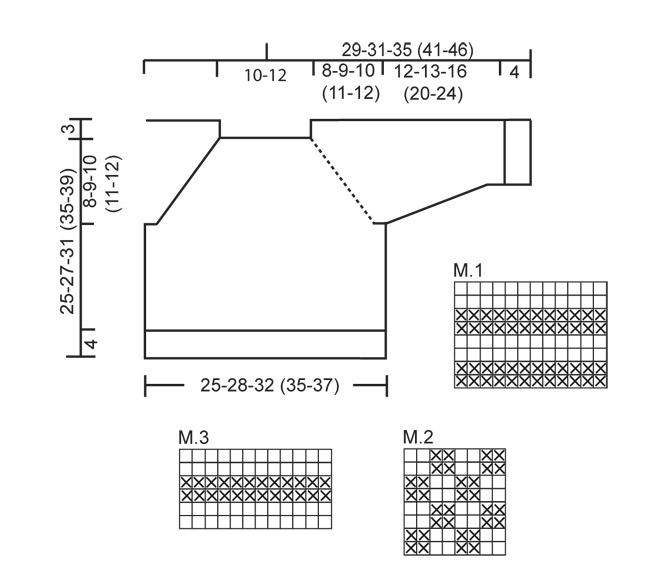 |
|||||||
Have you finished this pattern?Tag your pictures with #dropspattern #mcdreamysweater or submit them to the #dropsfan gallery. Do you need help with this pattern?You'll find 24 tutorial videos, a Comments/Questions area and more by visiting the pattern on garnstudio.com. © 1982-2025 DROPS Design A/S. We reserve all rights. This document, including all its sub-sections, has copyrights. Read more about what you can do with our patterns at the bottom of each pattern on our site. |
|||||||









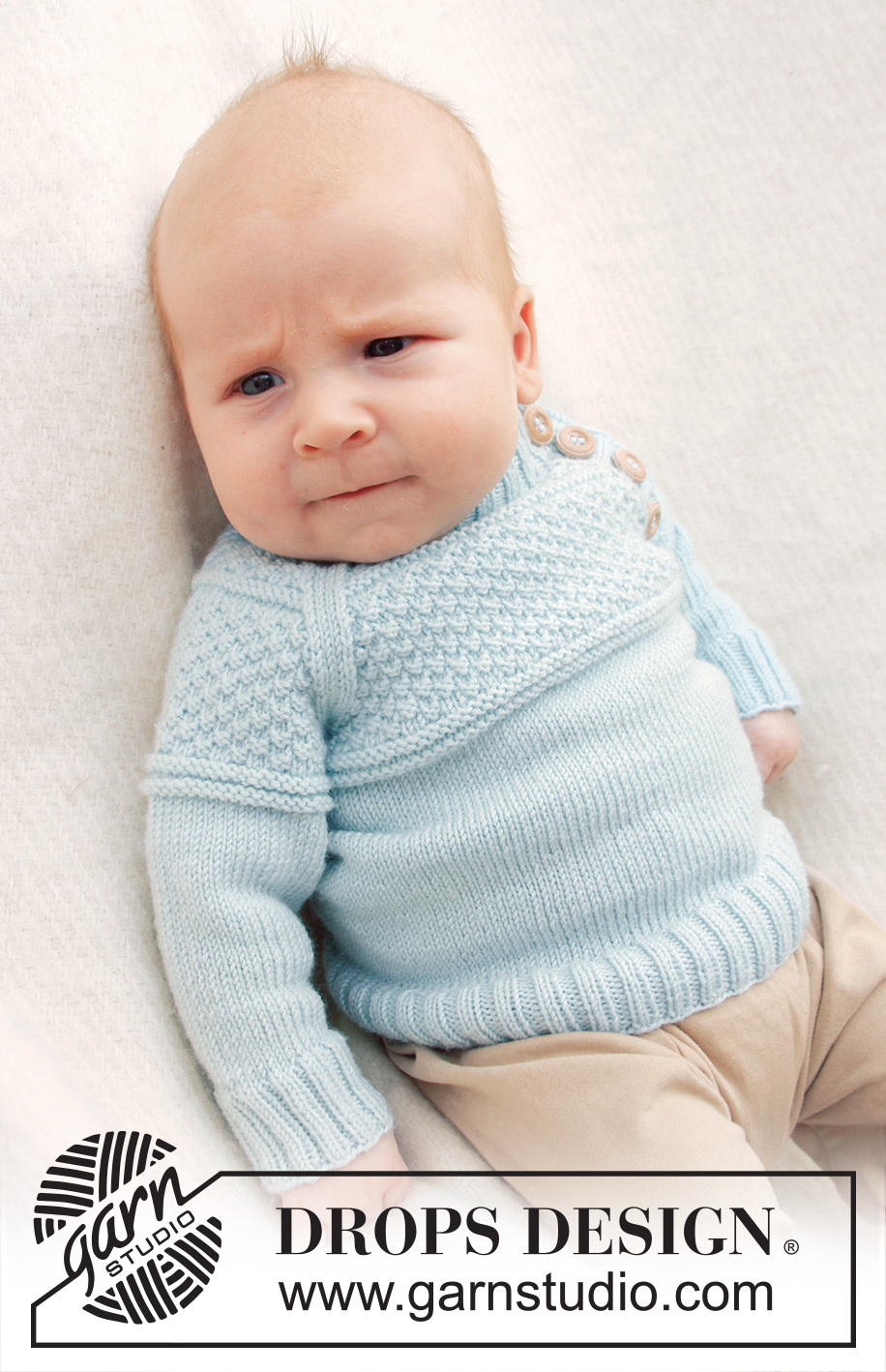

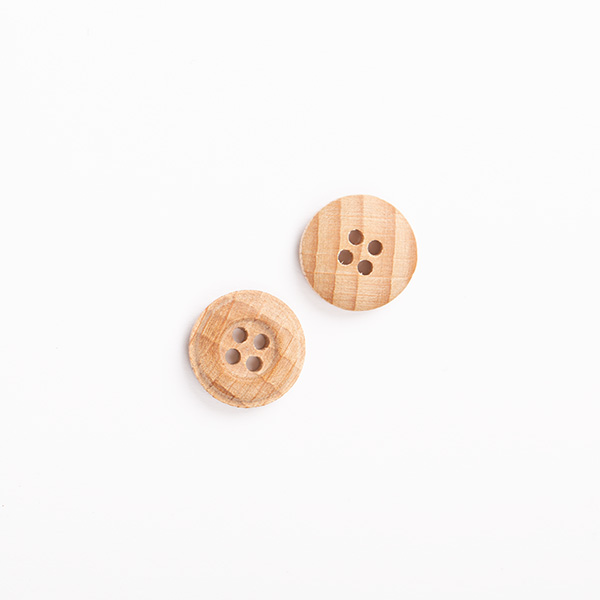

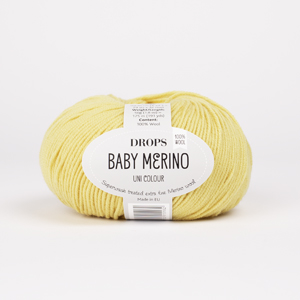












































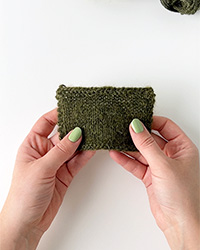
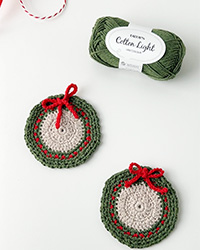
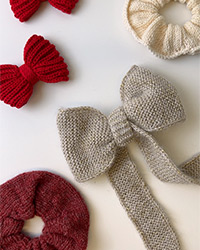
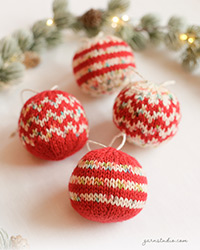
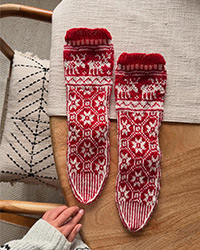

Post a comment to pattern DROPS Baby 21-15
We would love to hear what you have to say about this pattern!
If you want to leave a question, please make sure you select the correct category in the form below, to speed up the answering process. Required fields are marked *.